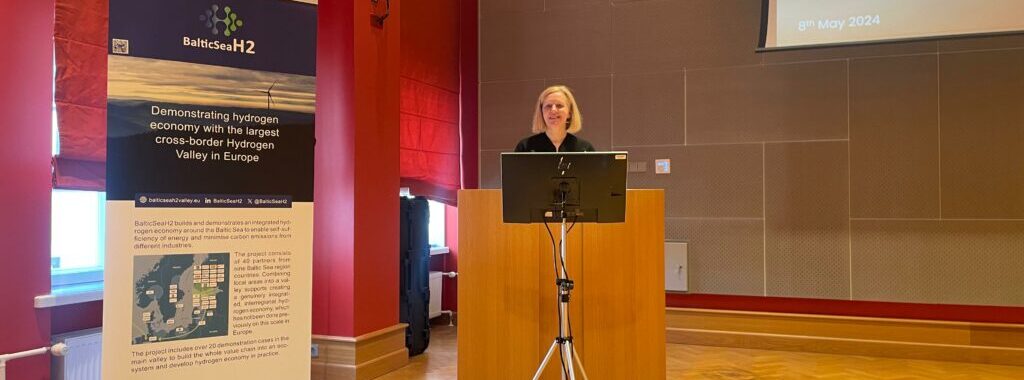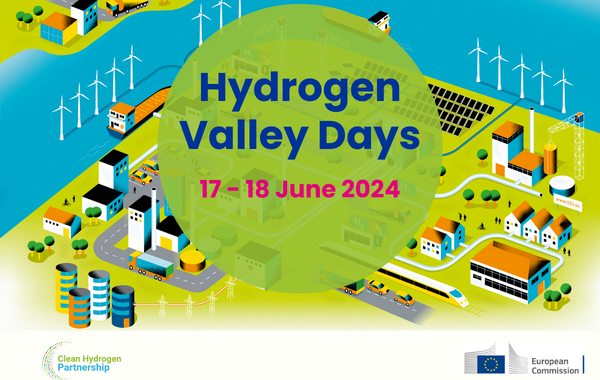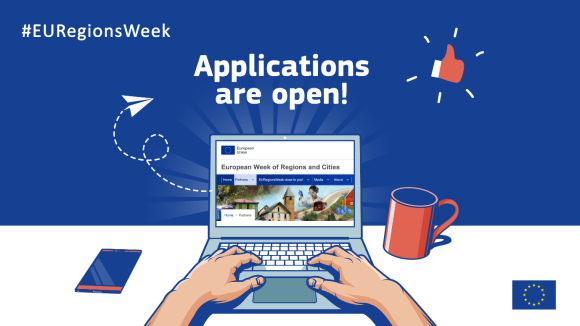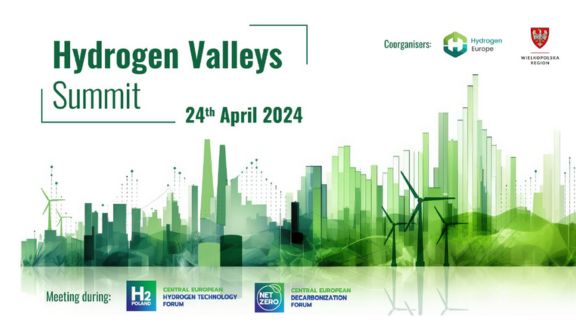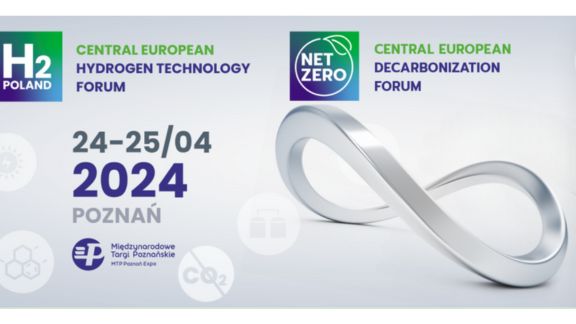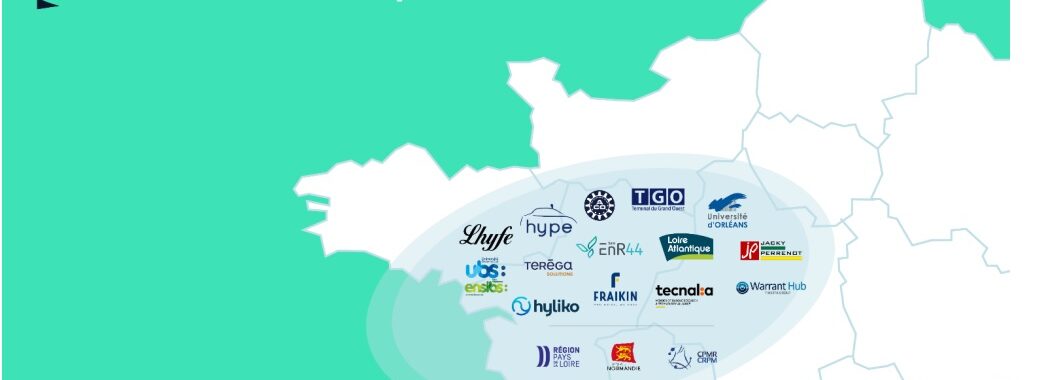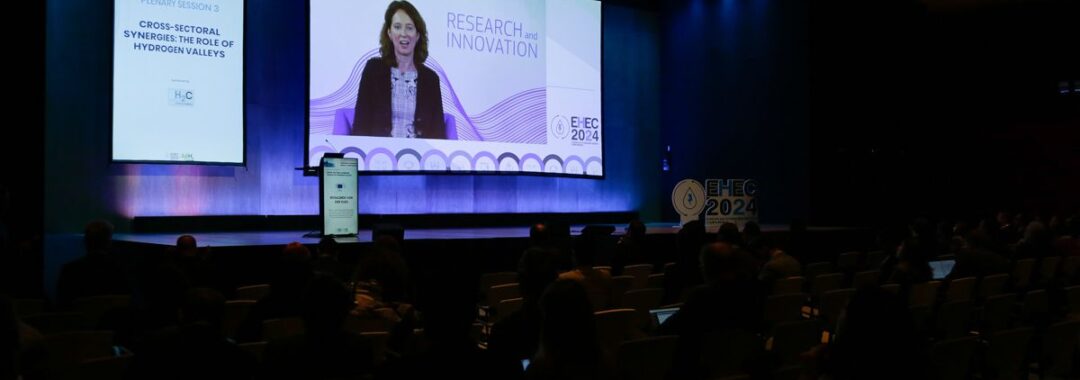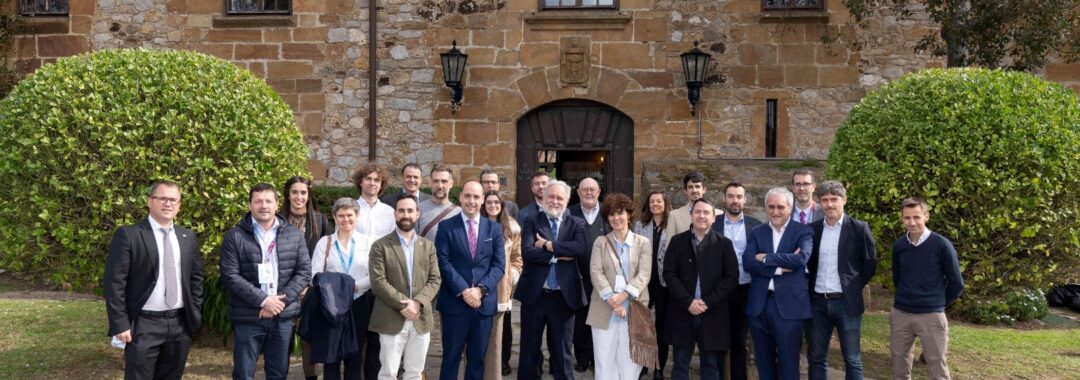Archivos de la categoría: Uncategorized
EU Hydrogen Valleys Days: Advancing the Hydrogen Economy in Europe
The EU Hydrogen Valleys Days, set to take place on June 17-18, 2024, at The Hotel in Brussels, represents a pivotal gathering for stakeholders in the hydrogen sector. Organized by the Clean Hydrogen Partnership, this event underscores Europe’s commitment to advancing hydrogen technologies and building robust hydrogen economies across its regions.
The concept of Hydrogen Valleys is rooted in the collaboration and innovation fostered by various European initiatives over the past decade. Initially propelled by the Fuel Cells and Hydrogen Joint Undertakings (FCH JU), these efforts have seen the maturation of hydrogen technologies from research phases to large-scale demonstrations. Notably, the FCH JU’s support in hydrogen production through water electrolysis using renewable energy has catalyzed significant advancements, enabling capacities to scale from several hundred kilowatts to multi-megawatt plants over the last ten years.
The inception of the Hydrogen Valleys initiative can be traced back to 2017, with the FCH-Regions Initiative, which engaged 89 regions and cities from 22 countries in shaping green energy transitions. This initiative laid the groundwork for the European Hydrogen Valleys Partnership, established in May 2019 under the S2 EU Hydrogen Valleys Platform. The partnership facilitates knowledge exchange and strengthens the hydrogen value chain across Europe, promoting the creation of integrated hydrogen ecosystems that span various applications and sectors.
The Hydrogen Valleys concept has gained considerable traction, with projects like BIG HIT, HEAVENN, and Green Hysland becoming flagship models. These projects illustrate the comprehensive approach of Hydrogen Valleys, which includes production, storage, distribution, and utilization of hydrogen across diverse sectors such as mobility, industry, and energy.
The REPowerEU Plan, introduced in May 2022, further amplifies this momentum with a €200 million investment aimed at doubling the number of Hydrogen Valleys in Europe by 2025. This initiative is integral to the EU’s strategy to reduce dependence on fossil fuels and accelerate the green transition by targeting hard-to-decarbonize industries and promoting renewable hydrogen as a key energy carrier.
Participants of the EU Hydrogen Valleys Days can anticipate a robust agenda featuring keynote speeches, panel discussions, and presentations by leading experts and policymakers. These sessions will explore topics ranging from policy frameworks and regional case studies to project development assistance and financing mechanisms. Attendees will have the opportunity to engage in networking sessions, fostering collaborations that will drive the hydrogen economy forward.
For detailed information on the event’s agenda and to register, please visit the link:
Hydrogen Valleys’ Days 17-18 June 2024 in Brussels
The event, co-organised by the Clean Hydrogen Partnership and the European Commission, builds on the successful work of the Clean Hydrogen JU. This involves the collaboration with the regions and cities including project development assistance and funding of already 15 hydrogen valleys across Europe. This groundwork sets the stage for the launch of an EU roadmap for Hydrogen Valleys and related facility.
For detailed information on the event’s agenda and to register, please visit the link: EU Hydrogen Valleys Days: Advancing the Hydrogen Economy in Europe
Mark Your Calendars! European Week of Regions and Cities Returns to Brussels
Calling all regions and cities across Europe! The wait is over – the 22nd edition of the European Week of Regions and Cities (EURegionsWeek) is officially on the horizon. This major event, dedicated to regional and urban policy, will take place in Brussels, Belgium from October 7th to 10th, 2024.
Get ready for an open and collaborative platform designed to foster cooperation and networking between cities and regions. This year’s edition promises to be a valuable opportunity to share best practices, exchange ideas, and explore innovative solutions for regional and urban development.
The planning for EURegionsWeek 2024 is already underway! The kick-off meeting on February 22nd saw co-organizers, the European Commission and the European Committee of the Regions, unveil the key themes and highlights of the event.
Interested in participating? Be sure to visit the Partners’ page and review the EURegionsWeek 2024 Guide for event partners. You can also access the recording of the kick-off meeting for further details.
Want to stay in the loop? Sign up for the EURegionsWeek newsletter, follow the official hashtag #EURegionsWeek on social media, or reach out directly to the organizers.
Don’t miss out! The deadline to apply as a partner for EURegionsWeek 2024 is April 2nd, 2024. Take advantage of this chance to connect and shape the future of European regions and cities!
To apply, follow the steps on EURegionsWeek 2024 how to apply to become a partner, there is time until 02 April 2024!
European H2 Valleys 2024 Onsite Event – Riga, Latvia
The European Hydrogen Valleys 2024 program is gearing up for a pivotal event in September, bringing together the brightest minds and most promising players in the hydrogen sector.
This dynamic program, designed to foster collaboration and investment, culminates in a live event in Riga, Latvia on September 5th and 6th, 2024. A meticulously chosen group of emerging companies, selected by a panel of experts, will have the unique opportunity to showcase their innovations and forge strategic partnerships with established players.
The European Hydrogen Valleys 2024 event promises to be a catalyst for accelerating the development and adoption of hydrogen technologies across Europe. Investors, corporate partners, and industry experts will join forces with these rising stars, creating a dynamic environment ripe for collaboration and (co-)investment.
Key Details:
- Dates: September 5-6, 2024
- Location: Riga, Latvia
- Focus: Connecting emerging hydrogen companies with investors, partners, and experts
Hydrogen Valleys Summit within H2POLAND & NetZero Forum
The Central European Hydrogen Technology Forum H2POLAND and Central European Decarbonization Forum NetZero are a response to the need to popularise knowledge about low- and zero-emission technologies.
H2POLAND and Net Zero is the first trade fair in Poland and Central and Eastern Europe devoted entirely to hydrogen and decarbonization technologies. The forums are meetings where discussions about the future of decarbonization and the European economy play a key role.
Within the H2POLAND Forum, the Hydrogen Valleys Summit is going to be celebrated. The summit is organised by the Wielkopolska Region and Hydrogen Europe to disseminate the Hydrogen Valleys concept and share best practices and experiences mainly from European regions.
Two sessions:
- From regional to European hydrogen ecosystem – the role of the regions in championing EU Hydrogen Valley success
- H2 Valleys in Europe and Beyond – what we can learn from each other?
Hydrogen Valleys Summit 2024:
– Deepening the understanding of the concept and potential of hydrogen valleys.
– Solutions at European, regional, local level for the development of hydrogen valleys.
– Political and administrative framework, financial support, infrastructure needs.
– Different perspectives of European regions and beyond.
– Best practices, success stories and key challenges for hydrogen valley projects.
Registration and Tickets
H2POLAND and NetZero Forum – decarbonization and hydrogen technologies on the European agenda
The goals set by the European Commission in recent years, related to environmental protection and preventing the growing climate crisis, mean that the issue of industrial decarbonization has become crucial for the entire Old Continent. We increasingly see that green approaches to production and consumption are not just a matter of ecology, but are becoming strategic goals for the entire economy. In this context, reducing carbon dioxide emissions and the development of zero- and low-emission technologies appear as catalysts for positive changes.
The multi-faceted nature of decarbonization translates into various benefits for the economy.
– New investments in low-emission solutions and innovative technologies will not only revolutionize industries, but also create new jobs and introduce higher quality standards. This is an opportunity for a more sustainable future and a key element in building a competitive advantage on the global market. Already in April, Poznań will host a fair devoted to hydrogen and decarbonization technologies – says Piotr Drozdowski, director of H2POLAND & NetZero Forum.
European Emissions Trading System
One of the key factors influencing the competitiveness of production is the ETS tax. The new regulations include: Carbon Border Adjustment Mechanism (CBAM), gradual withdrawal of free allowances in the Emissions Trading System (ETS), new regulations for road transport and buildings (ETS II) and the Social Climate Fund. The introduction of these mechanisms is a significant step for the EU in the fight against the global climate crisis.
Each of these mechanisms poses challenges to the European Union, especially in the context of their possible impact on the prices of energy and products manufactured in the EU, as well as on the overall competitiveness of certain industries. Therefore, the value of these regulations requires constant analysis and monitoring to find the right balance between ambitious climate goals and maintaining the competitiveness of enterprises
Energy transformation
Subsequent topics of the Forum will be devoted to the RED III Directive, which entered into force in November 2023. Poland, like many other Member States, must adapt to its provisions, including: targets related to the share of renewable energy in overall energy consumption by 2030.
The role of hydrogen in the power system, costs of energy transformation, hydrogen storage, security of hydrogen infrastructure and certification in the hydrogen sector – these are the next topics of the Forum. Experts will present different perspectives on hydrogen transport, types of storage, safety aspects and challenges related to the certification of equipment and personnel.
Critical raw materials
Abandoning the use of fossil fuels cannot be a process that is intended to deprive humanity of fuels, energy or reduce the quality of life, but should take place in a planned, sustainable and safe manner. It is important to realize that such a transformation will require a significant increase in production capacity or extraction in areas that have not been crucial so far. New technologies for energy generation, transmission and storage, as well as the development of already mature ones, will increase the demand for a number of raw materials currently considered critical. – During the H2POLAND & NetZero Forum, we will present issues related to the CRM directive and challenges in the area of critical raw materials necessary for the energy transformation. We also want to draw attention to the fact that raw material security requires a significant increase in the share of recycling technologies in the supply chains of critical raw materials – says Robert E. Przekop, Ph.D., D.Sc., Prof. AMU.
Blue Deal
What is the role of water in the energy transformation? How the use of water resources and innovation can support sustainable development and the implementation of the goals of the Paris Agreement. The resulting panel discussion is expected to contribute to a better understanding of the opportunities offered by combining water and hydrogen resources, as well as help identify key areas requiring further research and investment. The Blue Deal is also an opportunity for regions to obtain financial resources to implement water management tasks.
The Central European Hydrogen Technologies Forum H2POLAND and the Central European Decarbonization Forum NetZero will be held at the Poznań International Fair on April 24-25, 2024.
Registration and Tickets
AdvancedH2Valley Project receives a €8.9 million grant from the EU to foster the Western France hydrogen transition
The 18 members of the AdvancedH2Valley consortium are proud to announce that their project has received an 8.9 million euros grant from the European Commission through the Clean Hydrogen Joint Undertaking, and its call HORIZON-JTI-CLEANH2-2023-1, to showcase advanced green hydrogen valley in Western France.
Based in the French Loire Valley, AdvancedH2Valley project aims to foster the Atlantic area’s energy transition and set the standard for clean, green, and renewable hydrogen. The Kick-off meeting occurred on 22-23 January 2024 in Nantes, France, with the participation of all consortium’s partners, coordinated by Lhyfe.
With secured funding from the EU – mainly dedicated to the uses and distribution of the hydrogen, AdvancedH2Valley unfolds across strategic locations in Western France. The project aims to introduce up to 11.5MW of new production capacities, in addition to the 1 MW pioneer unit already in operation, and innovative processes, including deploying one of the first hydrogen truck fleet in the country, H2 maritime applications, harbour logistics and hydrogen light commercial vehicles including taxis.
Among its ambitious objectives, the project envisions producing over 1 600 t/y of green and renewable hydrogen by 2028. Aligned with the EU’s Renewable Energy Directive, it establishes two new public Hydrogen Refueling Stations in addition to the 5 stations already in operation and a tailored supply chain, contributing significantly to the region’s sustainable energy goals and massification of the uses.
Beyond the environmental impact, AdvancedH2Valley seeks to be a catalyst for positive change, becoming an integral part of the local community, fostering collaboration and knowledge-sharing among neighbouring regions.
The beneficiary members of the consortium are: Lhyfe (France, coordinator), EnR44 (France), Teréga Solutions (France), Hyliko (France), Département de Loire-Atlantique (France), SAS Terminal du Grand Ouest – TGO (France), Fraikin France (France), Zamenhof Exploitation (France), Hype (France), Fundacion Tecnalia Research & Innovation (Spain), Université D’Orleans (France), Université Bretagne Sud (France), Warrant Hub Spa (Italy), Automobile Club de l’Ouest (France).
The associated partners are: Région des Pays de la Loire (France), Angers Loire Métropole (France), Région Normandie (France), Conférence des Régions Périphériques Maritimes d’Europe (France).
MORE INFO: www.advancedh2valley.eu
Building Cross-Sectoral Synergies: Hydrogen Valleys Take Center Stage at European Hydrogen Conference
Last March 7th a Plenary Session on the role of hydrogen valleys to foster cross-sectoral synergies was held in the framework of the European Hydrogen Energy Conference 2024 in Bilbao. Insightful speeches were given by the following speakers:
JOSÉ IGNACIO HORMAECHE, General Director of the Energy Cluster of the Basque Country and member of the Board of Directors of the Basque Hydrogen Corridor (BH2C).
He explained the strategy of the innovative Petronor refinery to put into operation by 2026 three electrolysers for a total of 112.5 MW of electrolysis (2.5 MW are already in operation since October 2023), as a basis and reference for the 52 projects and 73 companies that are currently part of the BH2C, and showed the main achievements and milestones of the ongoing projects. He also highlighted as success factors of the BH2C the involvement and private initiative achieved, as well as the cross-cutting activities that take place around all projects.
Furthermore, BH2C is in line with the «Net Zero Basque Industrial Supercluster» initiative promoted by the Basque Government, which has defined the roadmaps for the decarbonisation of the industrial sectors with the highest CO2 emissions due to their energy consumption.
DANIEL FRAILE, Chief Policy & Market Officer at Hydrogen Europe.
He expressed the voice of the industry by calling for more and simplified European funding programmes, in contrast to other mechanisms launched in other parts of the world, such as the United States, although he acknowledged the sector’s motivation for the recently created European Hydrogen Bank. He also defended the role of green hydrogen as the main vector in hydrogen valleys to enable sector integration, as the energy system is already facing an imminent risk of relying solely on electricity solutions. Europe needs to double its flexibility solutions by 2030 to support a decarbonised and secure EU electricity system, and this can only be done through a hydrogen economy.
ANTONIO AGUILÓ, Senior Project Officer, Clean Hydrogen Partnership
He gave a comprehensive overview of how the Clean Hydrogen Partnership has been supporting the hydrogen valleys over the past years.
From the BIG HIT project in 2015 to the Regions and Cities initiative between 2016 and 2018 to support cities and regions interested in fuel cell and hydrogen technologies, through the Memorandum of Understanding signed between the Fuel Cells and Hydrogen 2 Joint Undertaking and 40 regions and cities in Brussels in 2016.
From the 26 regions supported by the two waves of Project Development Assistance (PDA) since 2021 from idea to project plan, to the Mission Innovation Hydrogen Valley platform for global collaboration.
From the Clean Hydrogen Partnership Annual Work Plans supporting investments in hydrogen valleys, with €187 million of funding supporting 16 of them to date with more than 21,000 tonnes of H2 to be produced per year and an estimated electrolyser capacity of about 200 MW; to the Hydrogen Valley Facility to be launched in the second term of 2024 with a budget of €12.5 million for project development support to help hydrogen valleys at different levels of maturity to take final investment decisions, as well as horizontal activities such as knowledge and lessons learned gathering, in addition to the maintenance of the Mission Innovation Hydrogen Valley Platform.
ROSALINDE VAN DER VLIES, Director of the Clean Planet Directorate in the European Commission’s, Directorate-General for Research and Innovation and Deputy Mission, Manager of the Climate-Neutral and Smart Cities Mission
She commented on the great progress made in recent years and the European leadership through the Mission Innovation Hydrogen Valley Platform, which has identified nearly 100 hydrogen valleys worldwide with a total investment of €150 billion. 59 of these are in Europe, although around ¾ have yet to take a final investment decision. She highlighted that the investment commitment in Spain exceeds €8 billion for the 6 hydrogen valleys identified here.
She also announced that the REPowering the EU with Hydrogen Valleys roadmap will be published in the second quarter of 2024 after all the work done in the last months following the Joint Declaration on Hydrogen Valleys signed on 1 March 2023 by Hydrogen Europe, Hydrogen Europe Research, S3 H2V Partnership and the European Commission.
Finally, she congratulated BH2C, host of EHEC 2024, as a great example of a Hydrogen Valley, highlighting its strengths and positioning capacity.
CHATZIFOTIS KONSTANTINOS, Manager of European Affairs of MOH Group
He explained the hydrogen ecosystem that is currently being generated in the framework of TRIĒRĒS hydrogen valley, in the surroundings of Agioi Theodoroi refinery that MOTOR OIL HELLAS operates in the easternmost part of Corinthia, close to Athens, Greece. Towards the development of a hydrogen valley demonstrating applications in an integrated ecosystem in Greece they have built a financing structure based on own capital supported by a diverse network of funding schemes coming from the Clean Hydrogen Partnership production topics for a 30MW electrolyser in the EPHYRA project; to several CEF projects (REA, REAH2, and CLEA) for the construction of 2 HRS and deployment of light and heavy mobility fleet and electric vehicle charging points; through the innovative low carbon hydrogen and methanol production by large scale carbon capture funded under the large scale Innovation Fund IRIS project. He finally highlighted the relevance of the connections they have created with existing hydrogen valleys in Austria and the Netherlands as well as with emerging regions such as in Cyprus and Crete to create synergies between them like H2 corridors, hubs, etc. in order to integrate elements of the different value chains and creating economies of scale as well as to provide its lessons learned and experiences.
OLIVIA INFANTES, Regulatory Affairs Director – Hydrogen and Clean Power en Cepsa
She explained how the Andalusian Green Hydrogen Valley is focused on the decarbonisation of industry and heavy transport, which will become a reality from 2026 to 2028 through the recently approved by the European Commission and supported by an overwhelming majority at the European Parliament «Project of Common Interest» label. CEPSA will build at its refineries in southern Spain of Los Palos de la Frontera, Huelva and San Roque, Cádiz, the largest 2G biofuels plant in Southern Europe and 2 GW of electrolysis to produce E-ammonia and E-Methanol. She also reflected the agreement reached a few months ago with the Port of Rotterdam to supply decarbonised fuels for bunkering or cracking to supply hydrogen to Northern European customers, backed by the Royal Houses of Spain and the Netherlands.
Meeting of the heads of Hydrogen Valleys in Spain
Coinciding with the celebration of the European Hydrogen Energy Conference 2024 in Bilbao, the heads of the different Hydrogen Valleys being developed in Spain visited the Petronor refinery on 7 March, where, since last October, a 2.5 MW electrolyser has been operating to supply renewable hydrogen to the Energy Intelligence Center, the refinery itself and a future hydrogen refuelling station that will supply buses and light vehicles at a nearby mobility logistics platform.
In addition to the representatives of the Basque Hydrogen Corridor who acted as hosts, the visit was attended by members of the Government of Navarre, the GetHyGa initiative of Aragon, and the Hydrogen Valley of Catalonia (these four regions are grouped in the so-called Ebro Hydrogen Corridor), as well as the Galician Hydrogen Association, Asturias, Castile and Leon Hydrogen Association, HyVal (Valencia), Vahia2030 (Alicante), Green Hydrogen Sector Association in the Region of Murcia, and Andalusian Hydrogen Cluster.
This meeting has allowed attendees to share best practices and discuss visions to promote a strategy and a state regulatory framework to support not only the necessary investment in the industries but also the difference in operating costs.
